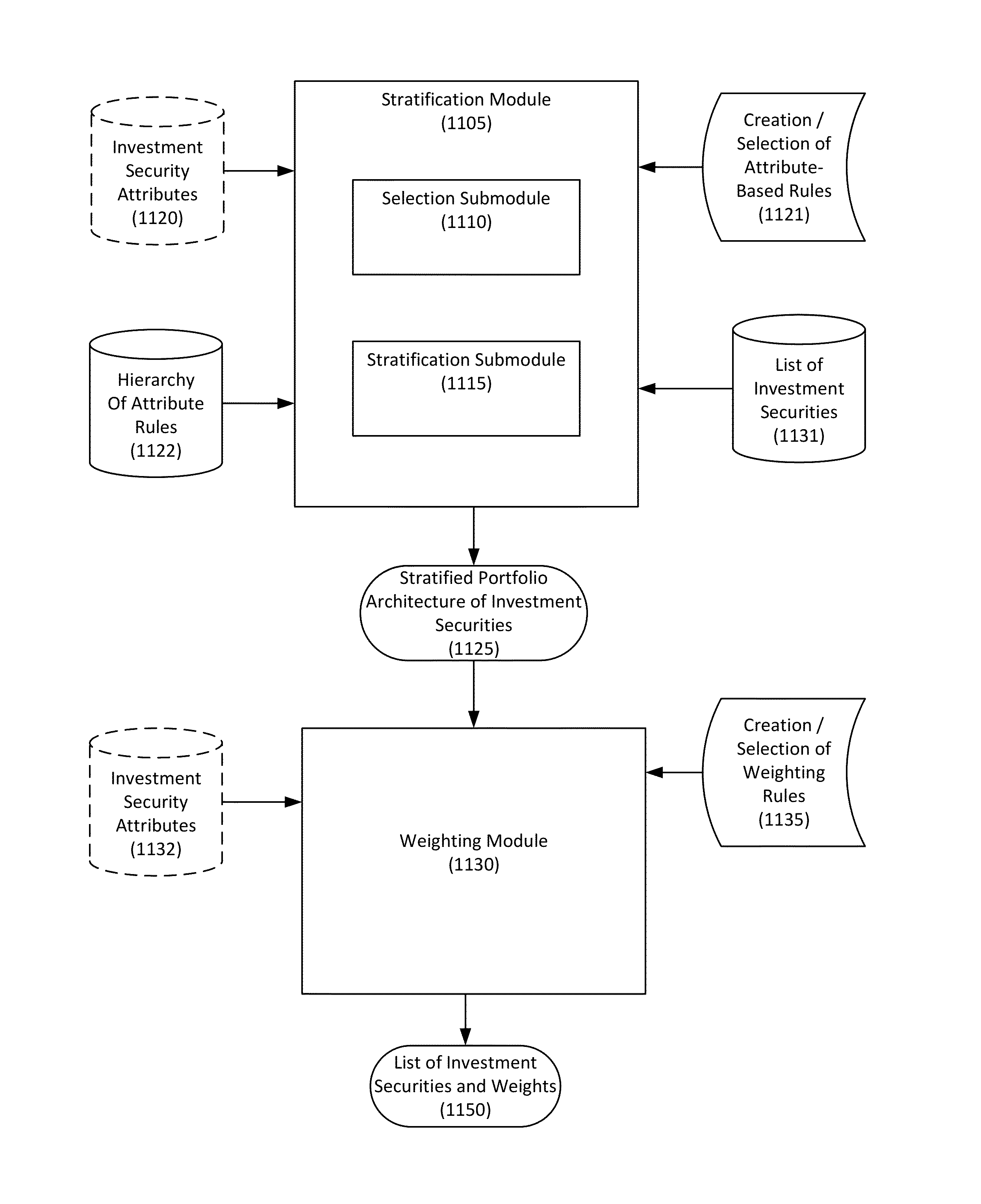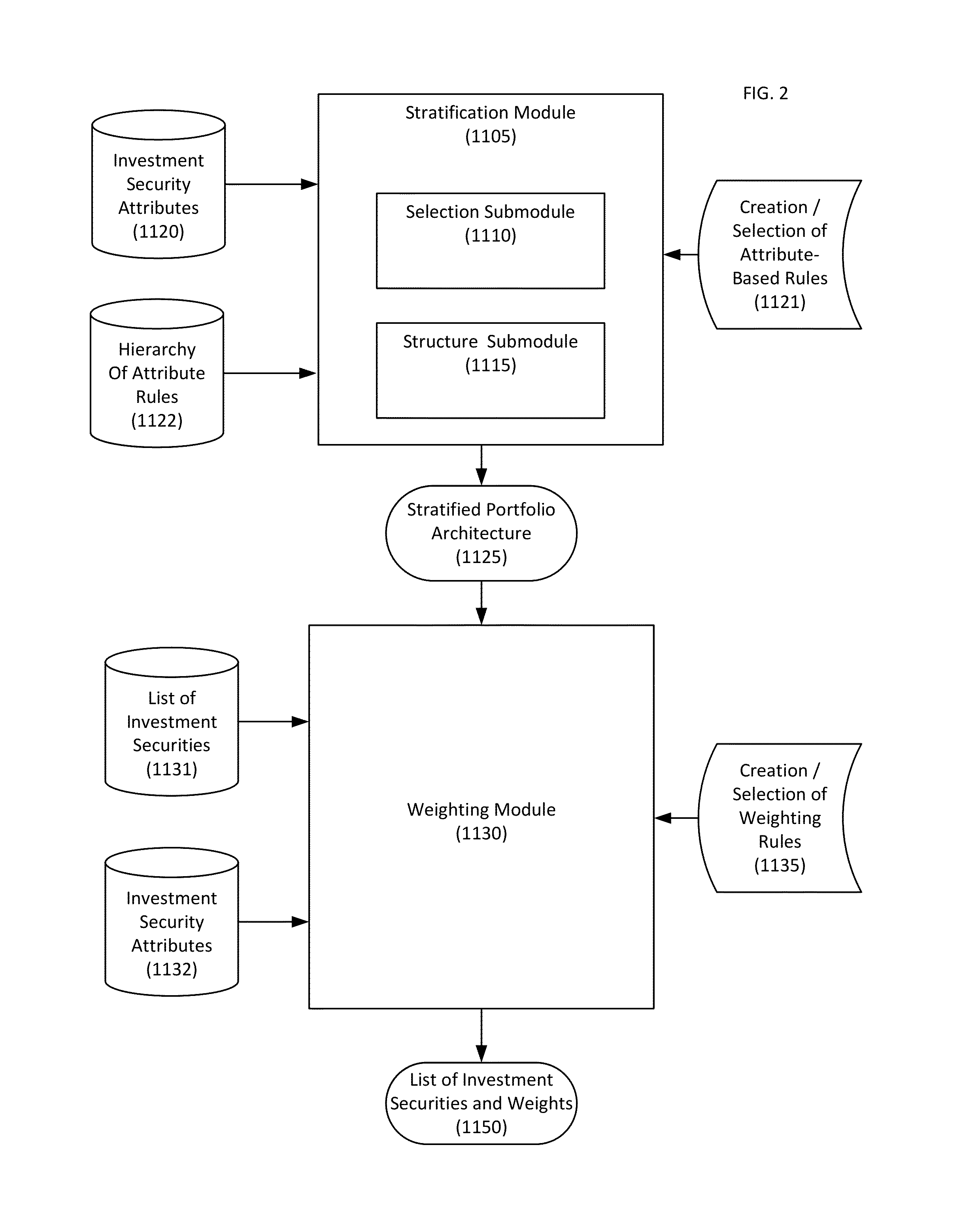These markets had their annual ups and downs, but over a reasonable period of time, these securities had both positive returns and differences that would be expected based on risk.
Because there are no controls in the benchmarks currently used to invest in equity securities, there is no assurance that these historical returns from yearend 1999 to the present are representative of equity securities in general.
All that is known is that the weighting strategy (capitalization-weighting without controls) has produced below average returns for long periods of time.
At this scale, building efficient portfolios has been challenging.
In addition, the underlying
population of securities has grown in heterogeneity and complexity.
Current systems of classification create difficulties in building new models of potential efficient portfolios of these large-scale modern investment vehicles.
Without this delineation, it is hard to understand the multivariate risks to which companies are exposed and, thus, to see how many companies in a large portfolio may share a similar or related risk.
These types of difficulties in classification are becoming increasingly apparent given complexities of today's companies and the increasing size and diversity of today's funds.
Despite the fact that one of the biggest risks in a capitalization-weighted strategy is the lack of controls for single risk exposures, bubbles or massive non-systematic price corrections, there are currently limited tools to systematically address these problems.
Volatility in pricing occurs continually with each fluctuation in price.
Volatility is a significant factor in portfolio performance and these price fluctuations create a drag on portfolio growth.
For example, daily volatility has been shown to hurt the return of leveraged exchange traded funds (ETFs).
None of these weighting schemes fully realize the Markowitz model, specifically, that normalizing risk / return is statistical process that requires matching the number of securities and the degree of correlation between the specific securities.
There are two significant limitations of the fixed NAICS and GICS hierarchies: 1) any items without a common parent are unrelated and cannot be compared; 2) any items in the same parent can only be compared along the
metrics that GICS or NAICS uses to define that group (insofar as the names of the groups indicate the metric that separates them, e.g., “
consumer” vs “commercial” may relate to the customer base).
There are certain events that appeared to be systematic because they created so much bias, e.g.,
the Internet bubble, but are non-systematic.
In either case, the
impact to an investor's returns can be extremely negative.
The random walk theory represents the inability to address the apparent randomness of volatility and returns in equity-based investment securities.
The recent underperformance of these indices to comparable debt indices has highlighted that these passive indexes are continually plagued by the same randomness
hypothesis.
Historically, healthcare was also plagued by a similar randomness problem.
Random movements in investment securities create a drag on returns, especially large downward movements caused by events such as bankruptcy or the popping of non-systematic bubbles.
A major problem in the risk management of large portfolios of securities is the inability to control for the occurrence of these types of events.
If a portfolio inadvertently over-weights in a security or groups of securities that have a common bubble or bankruptcy risk, the returns can be materially impacted by a relatively small number of securities in the portfolio.
Unfortunately for investors, these 16 companies, which were all in the business of moving, storing, or
processing information, were 24.8% of the total portfolio.
The prior efforts to improve portfolio returns appear to have at least two problems: 1) a sub-optimal number of groups, and 2) no ability to control for variance or correlation between groups or within each group to ensure that each group operates in a predictable group-specific way.
Existing large-scale heterogeneous portfolios of securities have insufficient controls on their constituent groups and neither capitalization-weighting nor even weighting solves the problem of
population control.
For multiple reasons, the problems described above are particularly acute in large-scale portfolios of securities.
Without both a reliable and validated
system of attributes as well as a stratification
system that uses a stratified composite hierarchy, it is exceptionally difficult to control for the different attributes associated with the securities.
(b) Liquidity limits on ownership: The more a fund owns of an individual security, the harder it is to sell depending on the liquidity of the shares.
In addition, because of size, many funds have absolute dollar or dollar-equivalent limits on ownership.
If a fund has $50 billion to invest, a $1 million investment might be considered too small.
(c) Large funds need a large number of securities to fill out a portfolio: Due to the factors identified above as well as other practical issues, a large fund needs a large number of companies to invest in due to liquidity and ownership issues.
Across an economic
system, there are many linkages and the larger the number of companies, the harder it is to track and oversee the potential linkages and risks that come from these linkages.
A major part of these linkages are due to non-systematic attributes associated with, among other things, a company's suppliers, products, industry, operations, geographic location, etc.
Understanding the different
potential risk groups and controlling for them is difficult without both a reliable and validated system of attributes as well as a stratified composite hierarchy to control for the different attributes.
In fact, sector differentiation may be a greater cause of price movements between geographies than the underlying currency that drives the products.
First understanding the different
potential risk groups that exist at any given point in time and in any specific geography or category, and then being able to control for them is difficult using currently known techniques.
For example, identifying that a company is in the semi-conductor business is a differentiable risk.
The existing categories in current systems tend to be standardized on a global basis and are unable to differentiate between these factors.
The inability to represent linked multi-attribute risks is a significant limitation for existing large-scale investment portfolios.
Known and existing systems do not address the underlying statistical causes for the systematic
impact of the random volatility of the constituents of large-scale portfolios of securities.
With improved controls, however, the
impact of non-systematic events could be limited.
 Login to View More
Login to View More  Login to View More
Login to View More 


